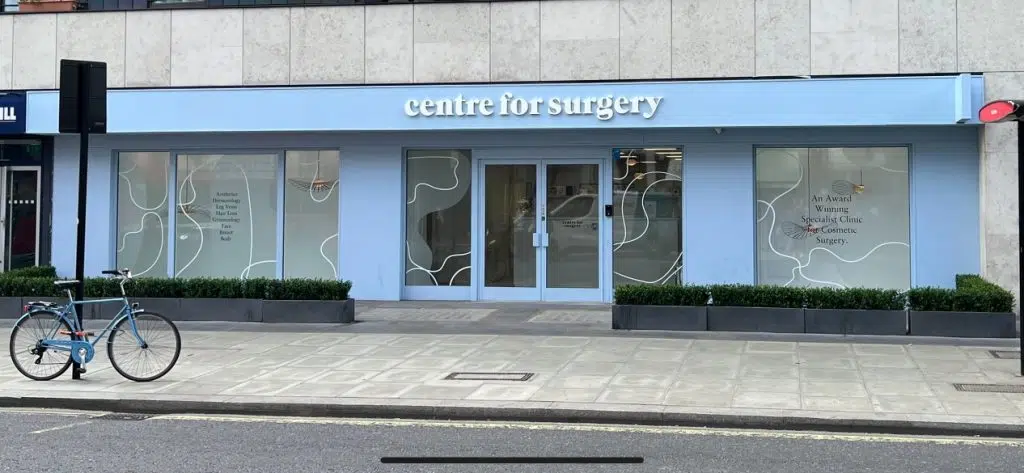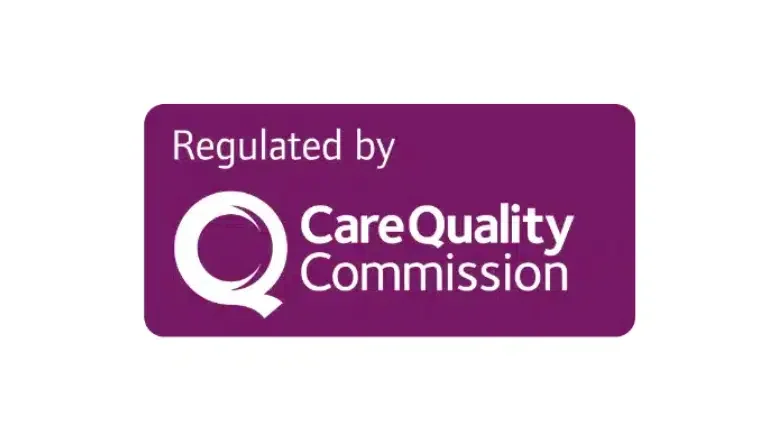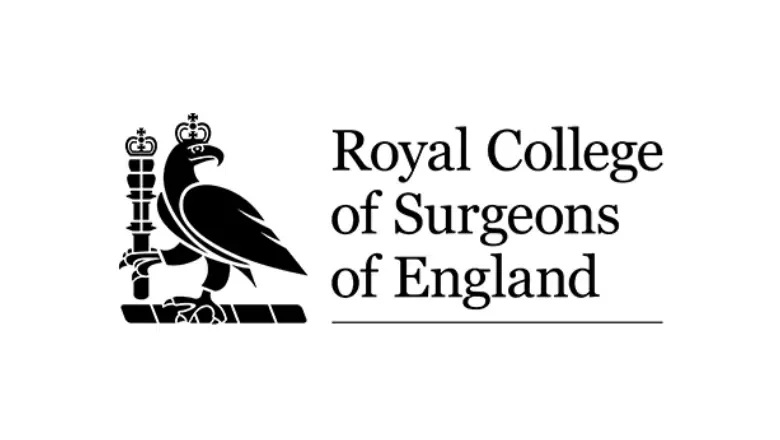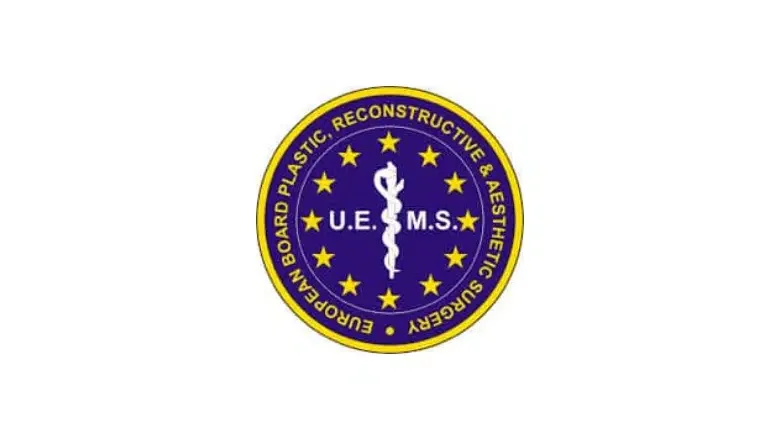Lower Back Lift Surgery London UK
Achieve a sleeker and more defined lower back with our expertly performed lower back lift surgery, designed to remove excess skin and fat for a transformed silhouette
A lower back lift is a surgical procedure commonly performed in the UK that aims to improve the appearance of the lower back area. This procedure typically involves the removal of excess skin and fat from the lower back to create a smoother, more toned appearance. The procedure can be performed as a standalone treatment or in conjunction with other body contouring procedures, such as a tummy tuck or liposuction.
RELATED: Body Contouring After Weight Loss
A lower back lift may be combined with buttock auto augmentation to enhance the size and shape of the buttocks without the need for butt implants. Buttock auto augmentation is a surgical procedure that uses the patient’s own tissue to enhance the size and shape of the buttocks. During the procedure, the surgeon will typically remove fat from one area of the body, such as the abdomen or thighs, and transfer it to the buttocks to create a fuller and more rounded appearance.
Buttock auto augmentation is a less invasive alternative to traditional buttock augmentation with implants. It can offer several benefits, such as a shorter recovery time and a more natural-looking result. The procedure is typically performed under general anaesthesia and may take several hours to complete, depending on the extent of the augmentation and the patient’s individual needs.
A lower back lift is not a weight loss procedure and is not recommended for those who are significantly overweight. It is also not recommended for individuals who have unrealistic expectations or who are seeking a quick fix for a larger body issue. The best way to determine if a lower back lift is appropriate for you is to consult with a plastic surgeon at Centre for Surgery, who can evaluate your individual needs and goals.
RELATED: Post Weight Loss Surgery
What is a Lower Back Lift?
A lower back lift is a surgical procedure designed to address excess skin and tissue in the lower back, hips, and buttocks region. It is commonly performed on individuals who have experienced significant weight loss or have loose, sagging skin due to ageing or other factors.
During the surgery, an incision is made across the lower back and hips. The excess skin and underlying tissue are then carefully removed, and the remaining skin is repositioned and tightened to create a smoother, more contoured appearance. Liposuction may also be used to remove excess fat and enhance body contouring.
A lower back lift can provide dramatic improvements in body shape and can address issues such as sagging skin, back rolls, and loss of waist definition. The procedure aims to create a more toned and proportionate lower body, allowing individuals to feel more confident and comfortable in their appearance.
Benefits of Lower Back Lift Surgery
A lower back lift is aimed at enhancing the appearance of the lower back region. This surgical procedure offers a multitude of benefits that cater to improving both aesthetics and function.
The primary advantage of a lower back lift is the improvement in body contour. The procedure sculpts the lower back by surgically removing excess skin and fat, rendering it smoother and more refined. This sculpting improves the overall body silhouette and contributes to a more aesthetically pleasing appearance, enhancing one’s physique visibly.
Another significant benefit is the reduction in skin laxity. Factors such as ageing, significant weight loss, or other life events can lead to loose and sagging skin around the lower back area. A lower back lift addresses these issues effectively by tightening and lifting the skin, which can rejuvenate the appearance and restore a more youthful look.
The psychological impact of a lower back lift should not be underestimated. Many individuals report a surge in confidence and self-esteem following their surgery. This renewed self-assurance often makes them more comfortable in their skin, allowing them to wear fitted clothing and engage in physical activities with greater ease and comfort.
This procedure can contribute to improved posture. The tightening of muscles and tissues in the lower back area during the surgery not only enhances the back’s appearance but also supports better posture. Improved posture can lead to reduced back discomfort and a better quality of life, as it helps in alleviating strain on other parts of the body.
The durability of the results from a lower back lift adds to its appeal. Typically, the outcomes are long-lasting, providing years of satisfaction. Factors like ageing, weight changes, and the natural elasticity of the skin can influence the longevity of the results.
Am I suitable for a Back Lift?
The first step in a lower back lift procedure is to consult with a plastic surgeon at Centre for Surgery to discuss the procedure, determine candidacy, and set realistic expectations. The surgeon will examine the lower back area during this consultation, take a medical history, and discuss your goals and concerns.
Determining whether you are a suitable candidate for lower back lift surgery involves evaluating multiple factors that influence the procedure’s safety and effectiveness. This type of surgery is tailored for individuals looking to improve the appearance of their lower back by removing excess skin and fat. Here are some critical considerations to help decide if you might be a good candidate for a lower back lift:
Presence of Excess Skin and Fat
This procedure is specifically designed for individuals with noticeable loose or sagging skin in the lower back area. You might be an ideal candidate for this surgery if you possess a significant amount of excess skin and fat.
Skin Elasticity
Successful lower back lifts largely depend on the skin’s ability to adapt to new contours following surgery. Good skin elasticity is crucial because skin with poor elasticity may not properly conform to the area’s new shape, potentially leading to suboptimal results.
Overall Health Status
Being in good general health is essential, as the surgery involves general anaesthesia and can be physically demanding. Your plastic surgeon will conduct a comprehensive medical assessment to ensure that you are fit for the procedure.
Stable Body Weight
Your body weight should be stable for the best results. If you are considering losing a significant amount of weight, it is advisable to reach your target weight before undergoing the surgery to maintain the effects of the lift.
Smoking Habits
Smoking can significantly impair healing and increase the likelihood of complications post-surgery. If you smoke, it is crucial to quit well in advance of the procedure and throughout the recovery period.
Realistic Expectations
It is important to understand and accept what a lower back lift can and cannot achieve. While it can enhance the appearance of your lower back, it is not a solution for altering the body’s basic structure or achieving perfection.
Personal Motivation and Compliance
A strong motivation to undergo the procedure and a commitment to follow all post-operative care instructions provided by your surgeon will contribute to a successful outcome and smooth recovery.
Our plastic surgeons can provide you with more detailed information and guidance on the procedure and help you make an informed decision about whether to proceed with a lower back lift.
Lower Back Lift Procedure
Lower back lift surgery involves several meticulous steps designed to enhance the appearance of the lower back by removing excess skin and fat and tightening underlying muscles. Here’s a detailed step-by-step breakdown of the procedure:
Anaesthesia Administration
The surgery begins with the administration of general anaesthesia. This ensures that the patient remains unconscious and pain-free throughout the procedure. An anaesthesia team is present to monitor the patient’s vital signs continuously, ensuring safety and comfort.
Making the Incision
The surgeon makes a strategic incision along the lower back, typically near the waistline. The length and shape of the incision depend on the amount of skin and fat that needs to be removed. This incision serves as the entry point for the surgical procedure.
Removal of Excess Skin and Fat
The surgeon removes excess skin and fat from the targeted area through the incision. This step is crucial for reducing bulk and enhancing the overall contour of the lower back area, contributing significantly to a more toned appearance.
Tightening of Muscles and Tissues
After removing skin and fat, the underlying muscles and tissues are meticulously tightened. This tightening is essential for improving the structural support of the lower back and enhancing the smoothness of the area’s contour.
Redraping the Skin and Closure
Once the internal structures are tightened, the skin is carefully redraped over the newly shaped contour of the lower back to ensure a natural, improved aesthetic appearance. The incisions are then closed using sutures or surgical tape, depending on the extent of the procedure and the surgeon’s preference. Different closure techniques may be employed to minimise scarring and promote healing.
Recovery after Lower Back Lift Surgery
Lower back lift surgery recovery varies from person to person but typically takes several weeks. The following are some general guidelines for recovery after a lower back lift:
Pain and discomfort
Pain and discomfort are common after the procedure and can be managed with pain medications prescribed by your doctor.
Swelling
Swelling is common after the procedure and may last several weeks.
Wearing a compression garment
Your surgeon may recommend wearing a compression garment to help minimise swelling and support healing.
Rest
You will need to rest and avoid physical activity for several weeks after the procedure to allow your body to heal.
Follow-up appointments
You will have follow-up appointments with your surgeon to monitor your recovery and ensure everything is healing as expected.
Incision care
Your surgeon will instruct you on how to care for the incision sites and monitor for signs of infection or other complications.
Resuming normal activities
You will need to avoid strenuous activity and heavy lifting for several weeks after the procedure, and your surgeon will give you specific instructions on when you can resume normal activities.
Final results
Final results from a lower back lift may take several months to fully develop, but you should begin to see improvement in the appearance of your lower back shortly after the procedure.
How Much is Lower Back Lift Surgery - Costs & Prices in London & UK
The cost of lower back lift surgery in London can vary depending on several factors, including the surgeon’s experience and reputation, the extent of the procedure, and the location of the surgery centre. On average, the cost of a lower back lift in London can range from £7,000 to £10,000 or more.
The cost of lower back lift surgery is not covered by the UK National Health Service (NHS) as it is considered a cosmetic procedure. Patients interested in undergoing a lower back lift may need to pay for the procedure out of pocket, or they may have the option of financing the cost through a medical loan available through Chrysalis Finance.
What procedures can be combined with a Lower Back Lift?
A lower back lift is often performed with other cosmetic procedures to enhance the overall results. Some common procedures that may be combined with a lower back lift include:
Liposuction
Liposuction can remove excess fat from the lower back and surrounding areas, enhancing the results of a lower back lift.
Tummy tuck
A tummy tuck can be combined with a lower back lift to address excess skin and fat in the abdominal area and improve the overall appearance of the midsection.
Bra-line back lift
A bra-line back lift or upper back lift is designed to remove excess skin and fat from the upper back. Excess fat that collects in the bra area is often known as a bra bulge, bra rolls, or back rolls.
Buttock lift
A buttock lift can enhance the contours of the buttocks, complementing the results of a lower back lift.
Thigh lift
A thigh lift can improve the appearance of the thighs and enhance the overall results of a lower back lift.
Breast surgery
Breast surgery, such as a breast augmentation, reduction, or lift, can be combined with a lower back lift to enhance the appearance of the upper body.
Lower Back Lift Surgery at Centre for Surgery
Choosing Centre for Surgery for a lower back lift offers several compelling reasons:
Experienced Surgeons
Centre for Surgery is home to a team of highly skilled and experienced plastic surgeons who specialise in body contouring procedures, including lower back lifts. Their expertise ensures that you will receive the highest quality care and achieve optimal results.
Advanced Techniques
The surgeons at Centre for Surgery utilise the latest and most advanced surgical techniques to perform lower back lifts. They stay up to date with the latest advancements in the field, ensuring that you benefit from the most effective and innovative approaches to surgery.
Individualised Treatment
Centre for Surgery takes a personalised approach to patient care. Each patient is thoroughly evaluated, and a customised treatment plan is developed to address their specific needs and goals. Our surgeons take the time to understand your desires and concerns, providing tailored solutions for the best outcomes.
State-of-the-Art Facilities
Centre for Surgery operates in modern, well-equipped facilities that meet the highest standards of safety and comfort. The clinic is equipped with advanced technology and adheres to strict protocols to ensure the well-being of patients throughout their surgical journey.
Comprehensive Care
Centre for Surgery is dedicated to providing comprehensive care to our patients. From the initial consultation to post-operative follow-up, our team is committed to supporting you at every stage of your journey. We provide detailed pre-operative instructions, thorough post-operative care, and ongoing guidance for optimal recovery.
Outstanding Reputation
Centre for Surgery has built a strong reputation for delivering excellent results and exceptional patient satisfaction. Our commitment to excellence and patient-centred care has earned us recognition and positive reviews from numerous satisfied patients.
When choosing Centre for Surgery for a lower back lift, you can have confidence in the expertise of our surgeons, the quality of facilities, and the comprehensive care we provide, ultimately leading to a positive surgical experience and transformative results.
FAQs
-
Who is a good candidate for lower back lift surgery?A good candidate for lower back lift surgery is typically someone who:
Has Excess Skin and Fat: The ideal candidate has loose or sagging skin, as well as excess fat deposits, in the lower back, hips, and buttocks area. This may be a result of significant weight loss, aging, or genetic factors.
Has Reached a Stable Weight: It is important for candidates to have achieved and maintained a stable weight for at least six months prior to the surgery. Fluctuations in weight can affect the results of the procedure.
Has Realistic Expectations: Candidates should have realistic expectations about the outcomes of the surgery. While a lower back lift can significantly improve body contour and tighten the area, it is important to understand that there will be some scarring and individual results may vary.
Is in Good Overall Health: Candidates should be in good general health and free from any medical conditions that could increase the risks associated with surgery. It is important to disclose any medical history and current medications to the plastic surgeon during the consultation.
Has No Plans for Future Pregnancies: It is generally recommended that individuals who plan to have future pregnancies postpone the surgery until after completing their family. Pregnancy can affect the results of the procedure and may lead to the need for additional revisions.
Is Committed to a Healthy Lifestyle: A commitment to maintaining a healthy lifestyle, including regular exercise and a balanced diet, can help optimise the long-term results of the surgery.
Has Realistic Recovery Expectations: Candidates should be prepared for the recovery period following the surgery, which may involve temporary discomfort, swelling, and restricted physical activities. They should be willing to follow postoperative care instructions provided by the surgeon. -
Is lower back lift surgery permanent?A lower back lift is not a permanent solution, but the procedure results can last for many years. The longevity of the results depends on several factors, such as the patient's skin quality, age, and lifestyle habits, as well as the surgical technique used. For example, if a patient gains weight after the procedure, it may affect the appearance of the lower back, and the skin may begin to sag again over time. To help maintain the results of a lower back lift, it is important to maintain a healthy lifestyle, including a balanced diet and regular exercise.
-
How much weight can you lose with a lower back lift?A lower back lift is a cosmetic surgery procedure designed to improve the appearance of the lower back by removing excess skin and fat and tightening the underlying tissue. It is not primarily designed as a weight loss procedure, and the amount of weight loss that can be achieved with a lower back lift will depend on several factors, such as the patient's starting weight, body composition, and surgical technique.
Patients should generally expect to lose a small amount of weight after a lower back lift, typically between 2 and 5 pounds. -
What are the risks and complications of a lower back lift?As with any surgical procedure, a lower back lift carries certain risks and potential complications. While uncommon, it is important to be aware of these possibilities. Some risks and complications associated with a lower back lift may include:
Bleeding: Excessive bleeding during or after the surgery is possible, which may require additional medical intervention or blood transfusion.
Infection: Although rare, there is a risk of developing an infection at the surgical site. Proper wound care and adherence to post-operative instructions can help minimise this risk.
Poor Wound Healing: In some cases, the incisions may heal poorly, resulting in delayed wound healing or wound breakdown. This can increase the risk of infection or require additional interventions to promote healing.
Seroma: Fluid accumulation (seroma) can occur in the surgical area, leading to swelling and discomfort. Drains may be placed during the surgery to minimise the risk of seroma formation.
Numbness or Altered Sensation: Temporary or permanent numbness or altered sensation in the lower back, hips, or buttocks may occur due to nerve damage during the procedure.
Scarring: While efforts are made to minimise scarring, it is inevitable that some degree of scarring will occur. The appearance of scars can vary among individuals and may fade over time but will be permanent.
Asymmetry: There is a possibility of slight asymmetry in the contour and appearance of the lower back, hips, or buttocks following surgery.
Anaesthesia Risks: General anaesthesia carries its own risks, including reactions to medications, breathing difficulties, or other complications. However, these risks are minimised through careful preoperative assessment and the expertise of the anaesthetist. -
Is lower back lift surgery worth it?Lower back lift surgery can be worth it for individuals who are bothered by excess skin and fat in their lower back area. The procedure aims to contour and tighten the lower back, creating a more defined waistline and improving overall body proportions. By removing the folds of skin and fat, patients can experience increased comfort, boost their self-confidence, and enjoy the ability to wear form-fitting clothing.
The benefits of lower back lift surgery are long-lasting, providing patients with permanent results. The procedure can enhance the natural contours of the body, creating a more sculpted appearance.












